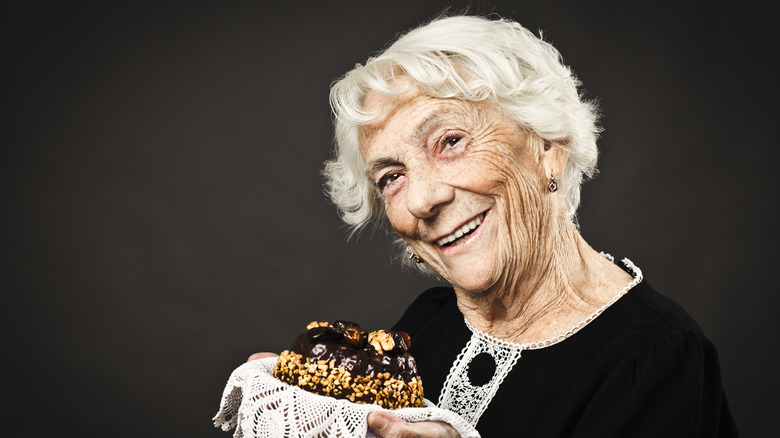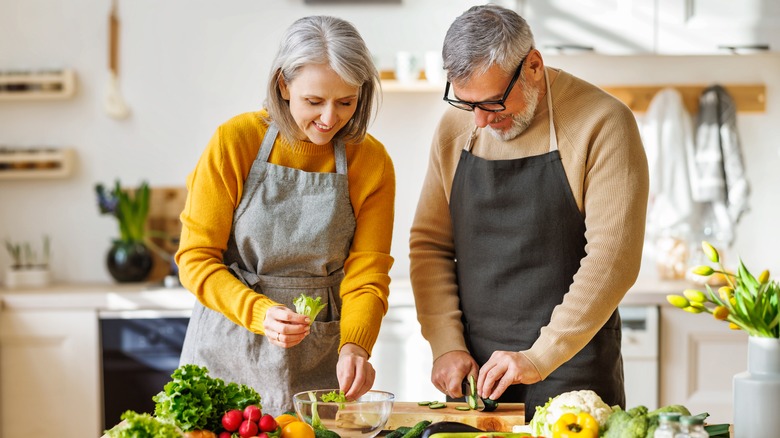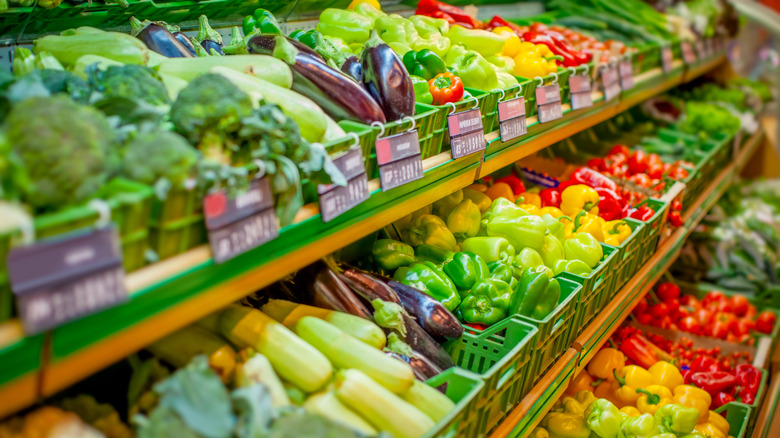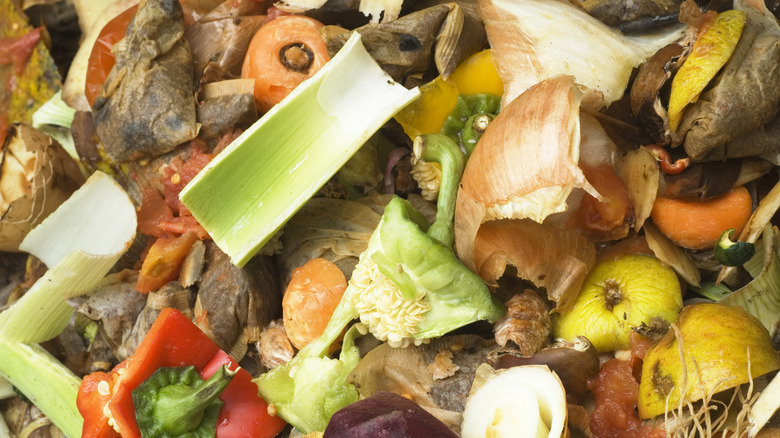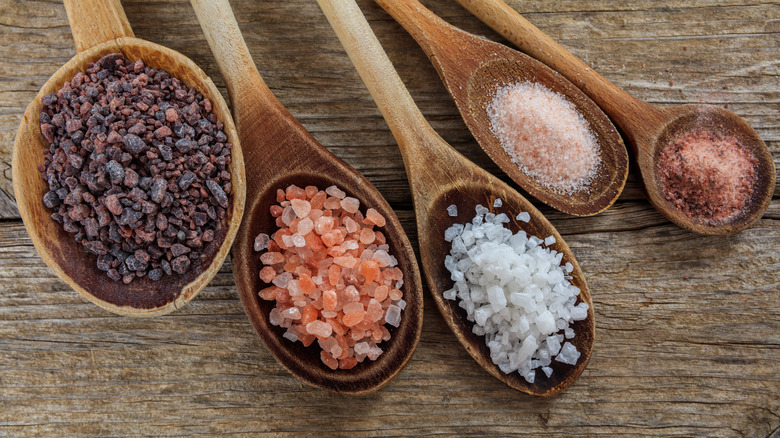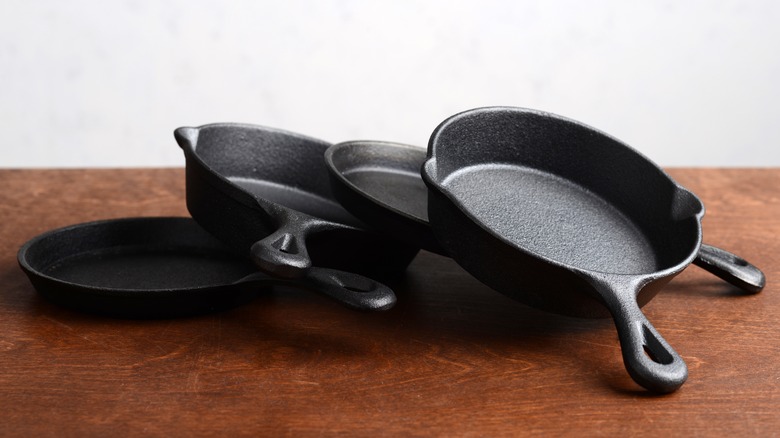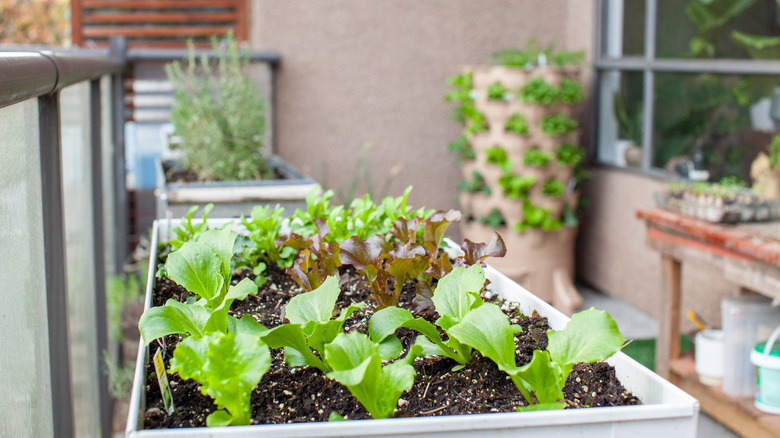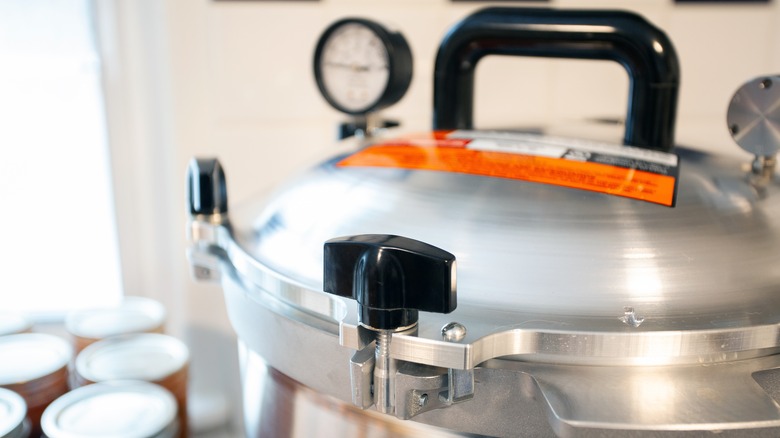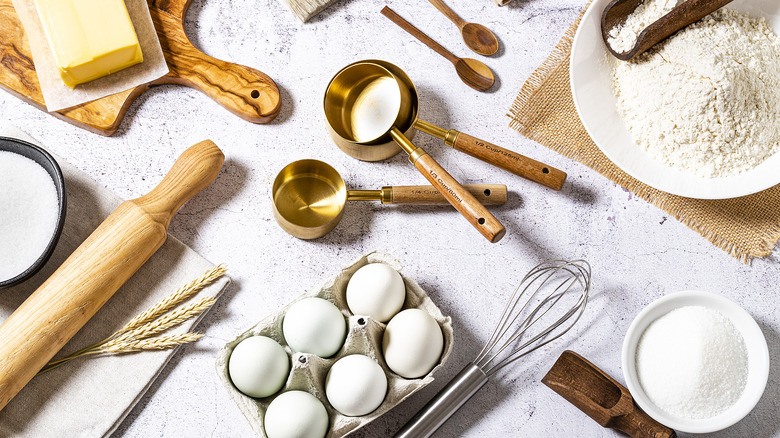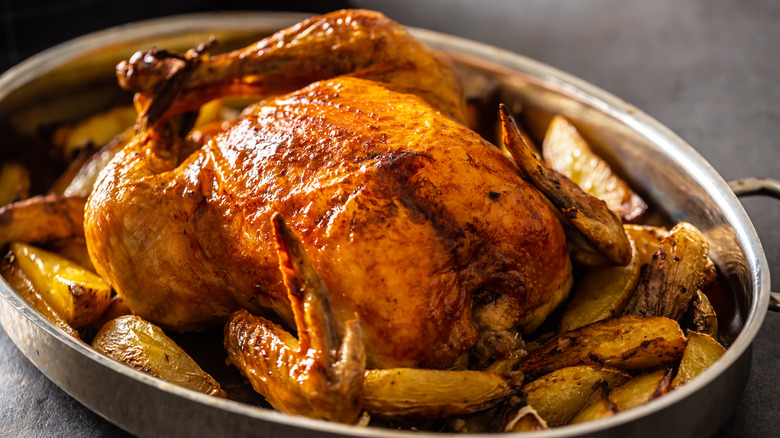How To Cook Like A Grandma
We may receive a commission on purchases made from links.
In an increasingly chaotic and busy world, many of us yearn for ways to slow down and recapture a bygone era of simplicity. Returning to an old-fashioned lifestyle like grandma lived is appealing for many reasons. It is more sustainable, earth-friendly, purposeful, and potentially healthier. It can also be more affordable. This is attractive to those struggling to make ends meet.
Enter Jill Winger, the Homestead Mentor. In the past decade, Jill has been educating her followers on her "Old-Fashioned on Purpose" lifestyle with YouTube videos, a podcast, recipes, and more. Her latest venture is a book titled "Old-Fashioned on Purpose: Cultivating a Slower, More Joyful Life," due out on September 26, 2023.
In this trope, Winger promises to show readers how to cook like a grandma by teaching skills like turning kitchen trash into treasure, taking full advantage of a whole chicken to produce three square meals, creating an old-fashioned dinner party, and even making a sourdough starter. She also hopes to instill joy in the kitchen for those who hate to cook.
We asked Jill about some of her most important takeaways for someone wanting to return to a simpler life and learn to cook like a grandma. She offered some golden nuggets that anyone can incorporate into their hectic daily lives, regardless of whether they live in the city or the country. Read on to glean some invaluable tips on returning to old-fashioned life.
Start cooking food from scratch
When asked about her most critical cooking advice, Jill Winger stated, "Reframe your beliefs about cooking from scratch. For the last 50+ years, marketers have worked overtime to have us believe that from-scratch food is automatically cumbersome, time-consuming, and expensive...It's often much easier than we think and incredibly rewarding."
But what does it even mean to cook from scratch? Generally speaking, cooking or baking from scratch involves making a recipe using fresh rather than pre-made ingredients. This phrase lives on a spectrum. Some people make everything from the ground up, including basics like the butter for cookies. For others, some store-bought items are considered acceptable as long as they are whole and unadulterated. Regardless of your precise definition, the benefits of cooking from scratch are multifold.
At its most basic, you know what you are eating when cooking from scratch. This is more nutritious and safer, particularly for those with food allergies. It is also more affordable. Pre-packaged foods are convenient, but you pay a premium for that luxury.
Cooking from scratch may have unexpected mental health benefits, including increased social interaction, boosting self-esteem, establishing a set routine, and stimulating creative juices. This may help to boost overall mood, fuel a sense of belonging, and help reduce anxiety and depression. But most importantly, food cooked from scratch tastes better, which is reason enough to start making more of your meals from the ground up.
Use the resources you have at your disposal
One of the hurdles many perceive to recapturing the old-fashioned way of life is accessibility to fresh food. This is particularly evident for those living in more urban settings that seem far removed from where food grows. Winger doesn't want this to stop you from implementing the Old-Fashioned on Purpose lifestyle.
She states: "One of the things I love most about homestead-style cooking is that you don't need a farm to cook like a farmer. Anyone can learn the art of sourdough bread, home food preservation, or fermentation. If you have access to producers or farmer's markets, that's fantastic. But most of these skills can be mastered with basic grocery store ingredients..."
This is brilliant advice. Using the resources you have at your disposal can help you feel less frustrated about the process. It will also help you save time and money and eliminate food waste. If your local grocery store happens to have a sale on a particular vegetable, stock up and can or freeze the leftovers. If they are purging imperfect produce at a discount, use this to your advantage and make a homemade soup or stock in your crockpot. Don't strive for perfection here. Do what you can within your means.
Learn how to compost your scraps
One of the foundational tenets of learning how to cook like a grandma is using every last bit of a food product and eliminating food waste. One of the best ways to do this is to compost. Most people think composting is a complicated, potentially dangerous process requiring specialized equipment that can cost a small fortune.
Winger couldn't disagree more. She suggests you "Skip the fancy composting gadgets. Composting is one of the most natural processes — we don't need to complicate it. Mix nitrogen-rich "green" materials (aka food scraps or fresh grass clippings) with carbon-rich "brown ingredients" (dried plant matter, leaves, etc). Water your bin or pile occasionally, and turn it over a few times. It's really that simple!"
Winger is describing what is known as basic cold composting, as opposed to hot composting or vermicomposting. This is the easiest and most cost-effective form of composting. It just takes more time. The key is knowing what items are compostable and which are not. You don't want to contaminate your pile by adding something that isn't compostable. You may want to keep a list of compostables handy until sorting your waste products becomes more second nature.
Compost can be used in myriad ways. It can help to boost the health of your flower gardens, it can be used to add nutrition to your soil by topdressing your lawn, and it is the ideal way to increase the output of your vegetable garden.
Make salt your superpower
Salt has gotten a bad reputation of late. As The Washington Post notes, excess sodium intake has been linked with a host of health conditions, including increased blood pressure, which has been associated with the development of heart disease. This has led to black-and-white thinking about an ingredient featuring prominently in the history of human health and culinary habits.
Jill Winger wants this to change. When asked what one ingredient she couldn't live without, the answer was an enthusiastic endorsement of this mineral. "Salt! Not only is it crucial for making delicious homemade dishes, it's also a vital part of making cheese, fermenting veggies, and curing meats."
Indeed, the uses for salt go far beyond taste. It can be added to improve the texture of baked goods, bind ingredients, and inhibit microbial growth. It has other superpowers, too, that are more interesting, like keeping pasta from adhering to itself, encouraging nutrient retention in blanched vegetables, and controlling the pace at which your bread dough will leaven.
The key is knowing which salt to use where. Kosher salt is ideal for all types of culinary applications except baking. Table salt can be used in any recipe, including baked dishes. When it comes to some of the fancy flavored salts or sea salts out there, these are generally best used as finishing salts, almost like a garnish at the end of the cooking process.
Invest in a cast iron skillet
When asked what one kitchen tool she couldn't live without, Winger stated, "My cast iron skillets. I use them for everything!" Many swear by the cast iron skillet they got as a hand-me-down from their grandmother. There are several reasons for this beyond the obvious fact that using them regularly may be one of the best workout routines for developing muscles in your upper body.
First off, cast iron is incredibly durable, which makes it affordable and a worthwhile investment. It is also easy to maintain. Once your cast iron is seasoned, all you need to clean it is hot water to remove any excess residue from the pan. You should never use harsh chemicals or abrasives. These pans should occasionally get re-seasoned, especially if you are using them to cook acidic foods, like tomato sauce, which may break down the seasoning.
Speaking of seasoning, seasoned cast iron is remarkably non-stick, making it ideal for cooking virtually anything. You can also use less fat when cooking, making cooking with cast iron healthier. As far as health is concerned, cast iron is void of synthetic coatings made from polytetrafluoroethylene, or Teflon, to give it its non-stick capabilities. As noted by The Atlantic, these chemicals have been linked to myriad potential health concerns ranging from reproductive issues to various kinds of cancer.
Lastly, cast iron is a marvelous conductor of heat and is multi-functional, moving seamlessly from the stovetop to the oven to the grill. This can ensure that your foods cook consistently and evenly. Ultimately, this means your food will taste better.
Start growing fresh vegetables in a container garden
Whether you are limited by apartment living, don't have time for gardening, or have a bit of a brown thumb, maintaining an expansive vegetable garden may be daunting, if not impossible. Enter the container garden. These are great options for those wanting to incorporate homegrown fruits and vegetables into their daily diets but can't have a large garden.
There are several benefits to having a container garden. They are compact, requiring very little space. They are mobile, allowing you to shuffle them around whenever. They are great for those with limited mobility, whether this is children, the elderly, or individuals with disabilities. They require very little maintenance in terms of weeding or pest control. They are highly versatile, allowing you to plant diverse crops that do not have to be compatible with one another. And you will save money by growing the foods you want to eat.
We wanted to know what Jill Winger's go-to items would be if she were going to plant a container garden. "Lettuce, spinach, and other greens are my go-to container options since they are so easy to grow. Plus it's amazing to have fresh salad greens without having to run to the store."
We'd argue that there's another reason these are good items to grow in containers. A 2023 analysis by Consumer Reports shows that leafy greens are consistently among the top 10 most commonly recalled store-bought foods. They are very often laden with E. coli and listeria due to runoff from water that has been contaminated. And because they are eaten raw, bacteria cannot be neutralized through cooking.
Learn how to can foods properly and safely
Food preservation has long been a means of extending the shelf-life of otherwise perishable ingredients. Of these, canning is one of the most common and convenient for ease of storage. Winger notes, "There's a lot of misinformation floating around, so make sure you're following recipes tested by university laboratories or the National Center for Home Food Preservation. Also, it's crucial that low-acid foods like meat, broth, and most veggies be canned using a pressure canner. It's not worth the risk otherwise."
Iowa State University provides some invaluable guidelines for selecting safe canning recipes that can prevent the contamination of your canned goods by the Clostridium botulinum bacteria. Chief among these recommendations is to only use recipes that suggest canning via a boiling water bath, atmospheric steam canner, or pressure canner. Any other methods that may have been popular with grandma are outdated and potentially unsafe. When it comes to canning, you may not want to cook like a grandma, but let her ingenuity inspire you.
Additionally, only consult with reliable testing sources that use advanced screening, including thermocouple sensors. Tests should be conducted in a laboratory where the ideal acidity, processing time, and density of the food product can be established. I
When baking, go back to the basics
One of the skills we often associate with grandma is home baking. With the popularity of quick store-bought mixes, eating a homemade from-scratch cookie or cake seems almost foreign. And yet, it doesn't have to be some far-fetched, impossible skill to master. Winger suggests you "Skip recipes that call for fancy, specialty ingredients and stick to the basics. You can create countless baked goods with the simplest components. Also, avoid industrial fats such as vegetable shortenings and margarine. You'll have superior (and more old-fashioned!) results by sticking with butter or even lard."
There are a few other basics to remember when baking like a grandma. First, don't forget to sift your dry ingredients for a more uniform end product. Next, always measure your ingredients. This isn't the time for haphazard creative expression. Baking may be fun, but it is a science that requires precision. And avoid baking on overly humid days. The excess moisture in the air can adversely impact the final product, no matter what the recipe is you are making.
Where substituting industrial fats is concerned, beyond health concerns and flavor differences, the molecular structure of butter is vastly different than shortening. Butter is made up of roughly 80% fat and 20% water. Shortening is pure fat with no water. This will impact the final product depending on what you are baking. If a recipe has been tested with butter, substituting shortening will likely alter more than just the flavor. It can change the baking time and temperature and mess with the texture of your cakes, cookies, or scones.
Keep things simple
Perhaps the biggest takeaway we got from Jill Winger about how to cook like a grandma was to keep things simple. There are so many crazy gadgets and gizmos, exotic ingredients, and complicated recipes that are readily available at our fingertips. We may think we need that home sous-vide machine for moist meat or that fancy imported cheese to make the ultimate macaroni and cheese. The reality is we don't.
When we asked Winger what dish reminds her of her grandmother, she replied, "My grandmother's roast beef suppers were legendary. Melt-in-your-mouth beef roast, smothered in from-scratch gravy, accompanied by buttery mashed potatoes and glazed baby carrots. I can still taste it!" When asked what her ultimate dinner party menu would be if she cooked like grandma, she stated, "You can't go wrong with simple ingredients prepared well. If I was planning an old-fashioned dinner party, I'd go with whole, roasted chicken salted 24 hours in advance, roasted potatoes garnished with garden herbs, homemade sourdough bread, fresh garden salad dressed with a vinaigrette, and homemade pie for dessert."
What all of these recipes have in common is time, patience, and a focus on simple, fresh ingredients. Foods like roast chicken or a pot roast have an old-fashioned appeal that connects us to an era where families would sit at the dinner table and enjoy a meal together. This is something that has been lost in the fast-paced lives we all live. If you want to start cooking like a grandma, slow down, appreciate the little things, spend time with loved ones, and keep it simple.
